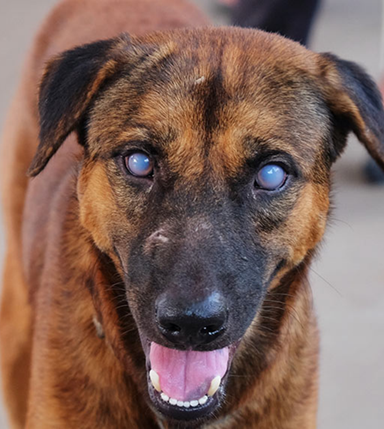Ehrlichia canis spreading across the NT!

The disease ehrlichiosis, a tick-borne bacterial disease in dogs which was first detected in the Northern Territory (NT) in June 2020 is now present in most Local Government Areas across the NT including Darwin, Katherine, Alice Springs and most remote communities. It is a devastating disease for dogs, dog owners and vets.
The bacteria is transmitted to dogs by the brown dog tick (not the cattle tick as far as we know). Once the disease is in the brown dog tick population it’s very difficult to manage.
The Department of Industry, Tourism and Trade’s Livestock Biosecurity branch has been working with NT vets since June 2020 to ensure all dogs which present to veterinary clinics with signs consistent with the disease, are tested. Early detection and veterinary treatment provides the best chance of recovery.
The Berrimah Veterinary Laboratory provides free diagnostic testing with nearly 500 sick and healthy dogs from across the NT already tested with over 30% of dogs testing positive to the disease. Vets are reporting up to 10 per cent death rate in dogs from infected communities.
The disease cannot be directly passed from infected dogs to humans. In extremely rare cases, ticks infected with Ehrlichia canis may infect people. However human ehrlichiosis is almost always caused by species other than Ehrlichia canis and these species have not yet been found in Australia.
To protect dogs from ehrlichiosis:
- have dogs on a tick prevention program. Tick collars and spot-on’s, used in combination with tablets and chews are the best primary protection for ehrlichiosis and tick control
- manage any tick infestations in the house yard
- inspect dogs daily for ticks, especially in tick-infested areas. Pay particular attention to the head, neck and ears, chest, between toes and around mouths and gums
- be on the lookout for signs of ehrlichiosis, such as fever, lethargy and appetite loss. Cloudy blue eyes are characteristic of the disease
- contact your vet if concerned about your dog.
Symptoms can include:
- fever
- lethargy
- loss of appetite
- weight loss
- swelling of the chest or front legs
- cloudy eyes or conjunctivitis
- pain and stiffness
- bleeding disorders such as nosebleeds or bruising on gums or belly.
Western Australia has introduced movement restrictions on dogs from the NT travelling to Perth.
For more information, go to the Northern Territory Government website.
